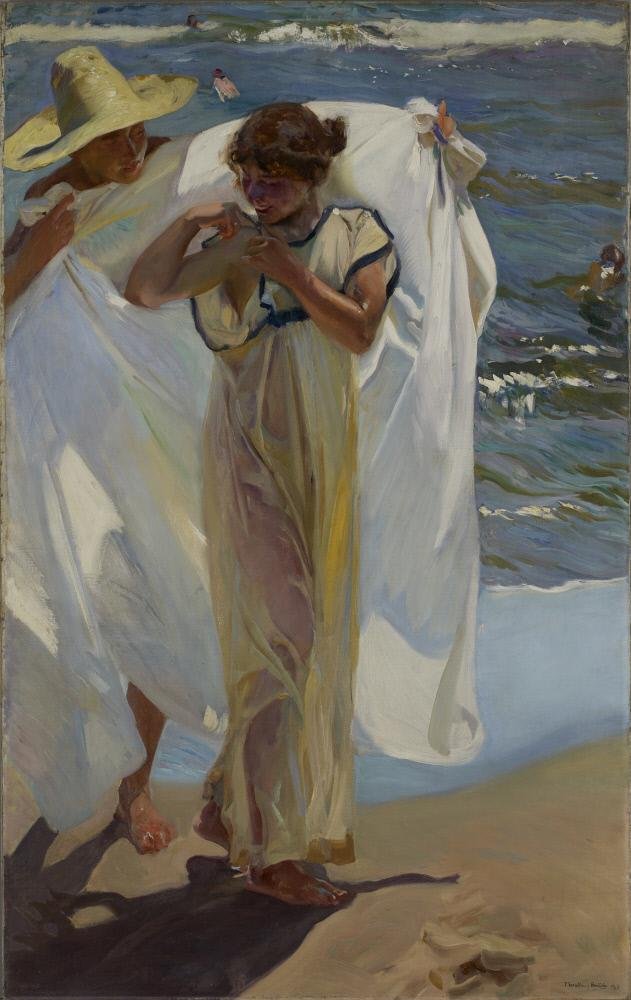THE NEW CRITERION, March 22, 2022
On “Nuestra Casa: Rediscovering the Treasures of The Hispanic Society,” at The Hispanic Society of America, New York.
In the January issue of The New Criterion I wrote about The Hispanic Society of America, New York’s treasure house of Spanish art, literature, and more. This 1904 Beaux-Arts creation on Audubon Terrace at 155th Street and Broadway, in Washington Heights, is my favorite local institution. No other collection in the New World can rival certain strengths of its holdings. Yes, the institution is underfunded and in need of restoration. At the same time, the Society’s remote location and self-contained mission have allowed it to focus on the business of preserving, presenting, and acquiring great works of Spanish culture beyond the political pressures of today’s museum mainstream.
Francisco de Goya, Duchess of Alba, 1797, Oil on canvas, The Hispanic Society of America, New York.
So it was with a degree of consternation that I received an invitation to the Society’s latest exhibition, called “Nuestra Casa: Rediscovering the Treasures of The Hispanic Society.” Here is an exhibition, we are told, that
comes at a moment when it is necessary for our traditional art historical hierarchies to be reassessed to fully incorporate the diverse populations to whom our public institutions belong, showing that the HSM&L’s collection extends much beyond the artwork of El Greco, Goya and Sorolla, to masterpieces within a range of mediums by relatively unknown Latin American artists, at times still unidentified, who have previously received little recognition.
Reassessing our “traditional art historical hierarchies”? Moving beyond the artwork of El Greco, Goya, and Sorolla to “masterpieces” by “relatively unknown Latin American artists . . . who have previously received little recognition”? Por favor, when you are the Hispanic Society, such boilerplate should be unnecessary. This is the institution that wrote the book on inclusion. The Society’s founder, Archer Huntington, took a serious interest in the works of both Spain and the Spanish diaspora at a time when Italian painting was regio. And indeed, contra the claims of “little recognition,” this exhibition of works from the collection reveals how much the Society was in fact at the forefront of appreciating the diversity of Hispanic culture from its inception. We are all now playing catchup to what Huntington collected and valued a century ago—and what his institution has been doing ever since.
El Greco, Saint Jerome, ca. 1600, Oil on canvas, The Hispanic Society of America, New York.
Curated by the visiting scholar Madeleine Haddon, the exhibition fortunately offers more than what these first impressions might suggest. In fact, the show ably tells the story of Huntington’s enlightened collecting interests:
Huntington was prescient in his understanding that a museum of Hispanic culture should be deeply grounded in Latin America. It was after attending a formal dinner given by President Porfirio Díaz in Chapultepec Castle while on a business trip to Mexico with his parents at age nineteen that, for the first time, Huntington made the decision to establish a “Spanish Museum.”
Huntington’s remarkable mother, Arabella, is rightly given credit for inspiring her son’s pursuits. The Society curators who carried forward Archer’s vision also get their due: Elizabeth du Gué Trapier, Beatrice Gilman Proske, Alice Wilson Frothingham, Florence Lewis May, Eleanor Sherman Font, and Clara Louisa Penney. (To point out that these curators “comprised almost entirely women” is another box that should not need to be checked.)
Joaquín Sorolla, After the Bath, 1908, Oil on canvas, The Hispanic Society of America, New York.
As the permanent-collection galleries remain closed for renovation, this exhibition comes during a brief break in the international tour of the Society’s treasures. That means New Yorkers have just three more weeks to see such genuine masterpieces as Velázquez’s Portrait of a Little Girl (ca. 1638–42), Goya’s Duchess of Alba (1797), El Greco’s Saint Jerome (ca. 1600), Zurbaran’s Santa Emerentiana (ca. 1635–40), and Sorolla’s After the Bath (1908). These works have been out of town since 2017. They will soon hit the road again for the Art Gallery of Ontario and London’s Royal Academy of Art. Our close proximity to The Duchess is alone worth the price of admission—which is free. Notice the full (and potentially romantic) drama of her hands and feet: the “Alba” printed on her ring, and her finger pointing to “Goya,” written, as though by her, in the sand at her feet.
These masterpieces are paired, at times artfully, at times not, with an eclectic assortment of paintings, books, and artifacts from the collection. All are remarkable, including a cookbook from sixteenth-century Spain with the first published recipe for paella. Yet are these all “masterpieces”? An opening pairing of the Velázquez with El Costeño (ca. 1843), a sweet but simple portrait by the Mexican genre painter José Agustín Arrieta, seems especially forced. The comparison does a disservice to both works, while the gallery lighting, it should be said, is especially unflattering to Arrieta.
Juan Rodriguez Juarez, De Mestizo y de India produce Coyote, ca. 1715, Oil on canvas, The Hispanic Society of America, New York.
Still, they are interesting to see. The same goes for Juan Rodriguez Juarez’s De Mestizo y de India produce Coyote (ca. 1715), a study in racial typology. Miguel Viladrich Vilá’s Man and Woman from Montevideo, a pair of genre portraits from 1923–25, call out for a greater appreciation of this artist with over two dozen works in the Society’s collection.
Let’s just appreciate such works for what they are—filling out our understanding of Hispanic culture—rather than pretending to offer up its greatest achievements.



